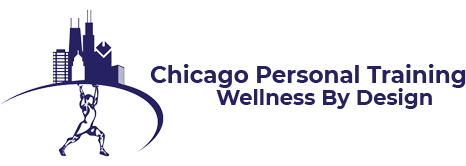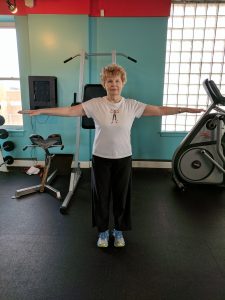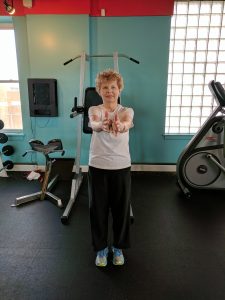Dynamic Stretch:
There are a number of ways to stretch; these three are the most common
Characterized by range of movement movements. An example of this would be standing up with your arms extended in front of you (palms facing each other) and swinging your arms open and closed.
Active stretching is a great way to stretch before and during your workout routine. This is also very useful for warming up specific muscles for a specific movement. Pre-workout active stretching is usually preferred before starting your workout routine.

Static Stretch:
Passive in nature. This type of stretch is held for 30 to 90 seconds. It helps elongate the muscle, and improve range of motion. This type of stretching is usually done near the end of your workout routine, but is sometimes implemented at the beginning of your workout as part of specific corrective exercise movements.
PNF Stretch:
This type of assisted resistive stretching is a “deep” stretch requiring resistance a holding phase for up to 8 seconds. Before starting to stretch, you will find that taking a couple of deep breaths will help you relax and enjoy your stretching even more.
- Take a deep breath through the nose and exhale through the mouth.
- When you exhale use your abdomen to push the air out
- Repeat this routine slowly for a couple of minutes.

Final Thought:
For those who work out right after work, many times you are still in your mode of work, so you may have a tendency to exercise the same way…rush, rush, rush.
Take a few minutes before you work out and warm up. Then spend five or ten minutes doing some relaxing stretches. You may find yourself not feeling so rushed as you exercise.
To get started on your fitness program call 847-772-3487 or click on the link below to inquiry for more information.
Always take a couple of minutes to warm up your muscles before stretching. In the first range you should feel a slight pull on the muscle.
If you find that you are very stiff at first, start with a smaller range of motion. Release the muscle letting it rest for a few seconds,
then repeat the same movement; this time increase your range. You should feel more of a pull on the muscle when stretching, but it should not hurt. If you notice other parts of the body shifting or moving, you are pulling too hard.

Strength training and flexibility training should go hand in hand. It is a common misconception that there must always be a trade-off between flexibility and strength. Obviously, if you neglect flexibility training altogether in order to train for strength then you are certainly sacrificing joint range of motion flexibility (and vice versa). However, performing exercises for both strength and flexibility need not sacrifice either one. As a matter of fact, flexibility training and strength training can actually enhance one another.
It is possible for the muscles of a joint to become too flexible. There is a trade off between flexibility and stability. As you get “looser” or more limber in a particular joint, less support is given to the joint by its surrounding muscles. Excessive flexibility can be just as bad as not enough because both increase your risk of injury.


